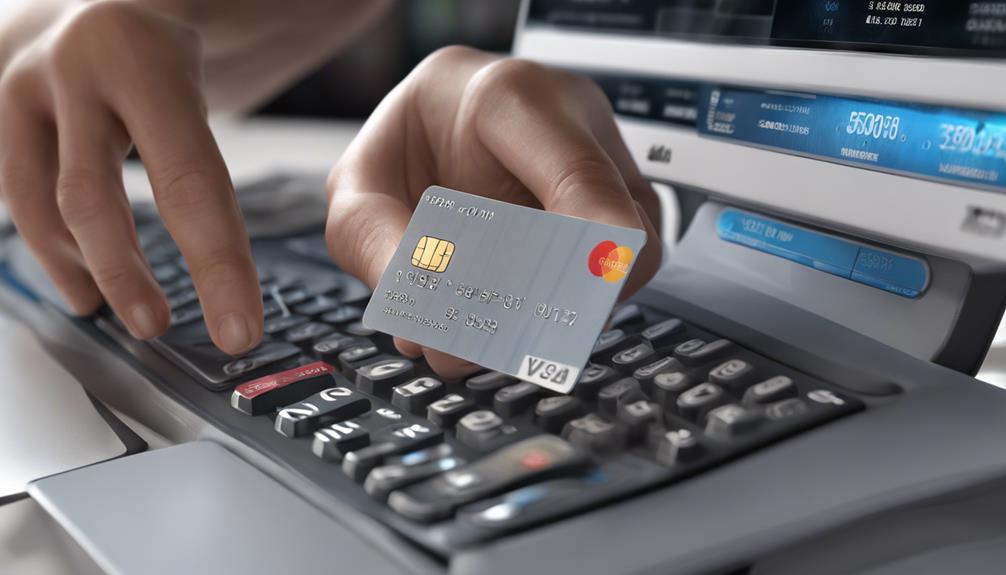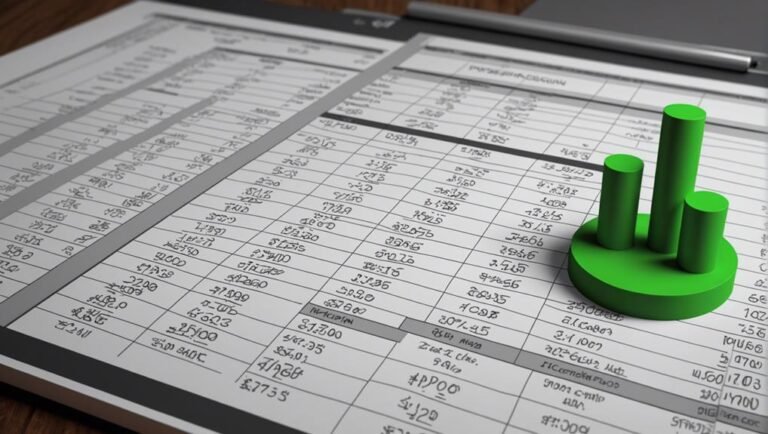What Is a Bank Account Number?
A bank account number is more than just a string of digits; it is a key element in the domain of financial transactions. Understanding the intricacies and significance of this numerical code is paramount for individuals and businesses alike. From its role in secure online payments to the safeguarding of personal information, the bank account number serves as a gateway to numerous financial operations. Exploring the nuances of this identifier can shed light on the fundamental workings of the banking system and empower users to navigate the financial landscape with confidence and clarity.
Key Takeaways
- Bank account numbers are unique identifiers for individual accounts.
- They are crucial for conducting online transactions securely.
- Located at the bottom of paper checks for verification.
- Offer protection against fraudulent activities and identity theft.
- Necessary for efficient account management and financial transactions.
Importance of Bank Account Numbers
How integral are bank account numbers to the seamless operation of financial transactions and account management?
Bank account numbers play a critical role in facilitating online transactions and ensuring efficient account management. Protecting accounts from fraudulent activities is paramount in the digital age, where online transactions are prevalent. Implementing robust security measures, such as multi-factor authentication and encryption protocols, is essential to safeguarding account numbers from unauthorized access.
Businesses and individuals must remain vigilant in protecting these sensitive identifiers to prevent identity theft and financial losses. By understanding the significance of securing bank account numbers, users can navigate the digital landscape with confidence and trust in the safety of their financial information.
Security Measures for Account Numbers
Effectively safeguarding account numbers is imperative in the world of financial security and transaction integrity. To enhance the protection of account numbers, consider implementing the following security measures:
- Multi-factor authentication: Utilize additional layers of security such as biometric verification or one-time codes.
- Guarantee: Ensure strong and unique passwords are used for account access.
- Regular account monitoring: Stay vigilant for any unauthorized transactions or suspicious activities.
- Secure communication: Verify the authenticity of requests for account information before sharing any details.
- Educational awareness: Stay informed about the latest security threats and best practices for safeguarding account numbers.
Location of Bank Account Number
Bank account numbers are typically located at the bottom of paper checks, between the routing number and the check number. This positioning helps in easy identification and verification during transactions. Apart from physical checks, account numbers can also be accessed through online banking platforms for customer convenience.
Online accessibility has made it simpler for individuals to view and manage their account numbers securely. Customer verification is important in ensuring that the correct account number is being used for transactions, whether through traditional paper checks or online transfers.
Significance of Routing Numbers
The positioning of bank account numbers between the routing number and check number on paper checks highlights the importance of routing numbers in facilitating secure and accurate financial transactions.
- Routing number verification: Confirms transactions are directed to the correct financial institution.
- Electronic payment processing: Facilitates seamless electronic fund transfers and online transactions.
- Identification of financial institutions: Aids in identifying the specific bank or credit union involved in a transaction.
- Error prevention: Minimizes the risk of payment delays or failed transactions due to incorrect routing numbers.
- Streamlining financial processes: Contributes to efficient and reliable processing of various financial transactions.
Role of Check Numbers
Monitoring and tracking payments in a checking account is crucial, with the check number serving as a vital identifier on each check. Check numbers play an important role in tracking payments and aiding in financial reconciliation processes. They are typically sequential, allowing for easy identification of specific checks in case of discrepancies or errors.
Understanding MICR Line Information
Pivotal in the automated processing of financial transactions, the MICR line on checks contains encoded information essential for accurate and efficient check processing. The MICR line encoding is fundamental for automated processing, ensuring seamless transactions.
Here are five key points about the MICR line to evoke understanding and appreciation:
- MICR technology enhances transaction accuracy.
- Automated processing reduces human errors.
- Swift check processing benefits both consumers and businesses.
- MICR encoding streamlines the clearing and settlement of checks.
- Efficient processing saves time and resources for financial institutions.
Benefits of Demand Drafts
Demand drafts offer a secure and reliable method for transferring funds between bank accounts, ensuring guaranteed payment and convenience for users. The advantages of demand drafts lie in their prepaid nature, eliminating the risk of bouncing payments. This prepaid instrument enhances transaction security, making it a preferred choice for various financial transactions.
Demand drafts are commonly used for services, fees, and significant transactions due to their secure and convenient nature. Users benefit from the assurance of payment and the ease of fund transfer without the need for physical cash. The prepaid feature of demand drafts adds an extra layer of protection, making them a reliable option for individuals and businesses seeking a secure payment method.
Safeguarding Bank Account Information
To guarantee the security of sensitive financial information, safeguarding bank account details is crucial in an era where digital transactions and online banking are prevalent.
- Maintain strong, unique passwords for online banking.
- Regularly monitor account activity for any unauthorized transactions.
- Be cautious of phishing scams and never share account details via email.
- Keep physical documents containing account information in a secure location.
- Enable alerts and notifications for account activity to detect any unusual behavior promptly.
Conclusion
In summary, bank account numbers serve as the key to financial transactions and account security. They symbolize trust, privacy, and control over one's financial assets.
Safeguarding this information is vital in today's digital age to prevent fraud and guarantee financial stability.
By understanding the significance of bank account numbers and implementing security measures, individuals can protect their assets and maintain peace of mind in their financial dealings.







